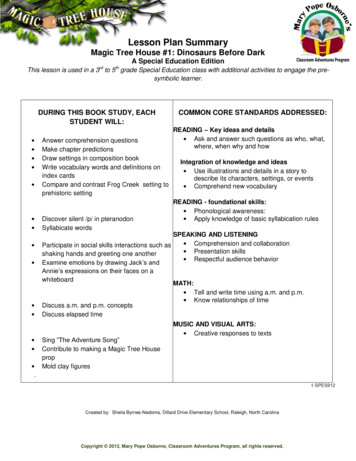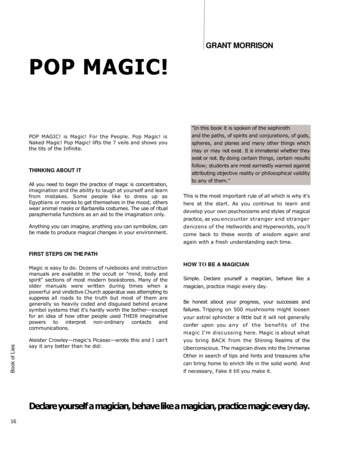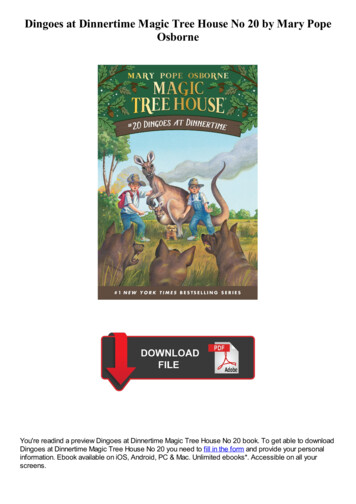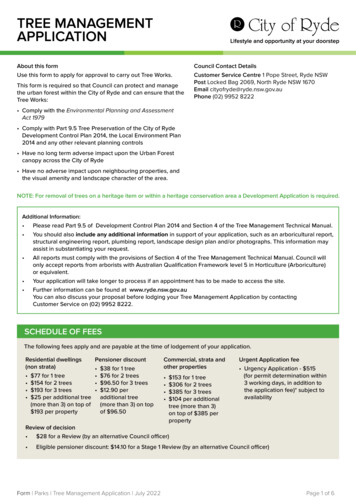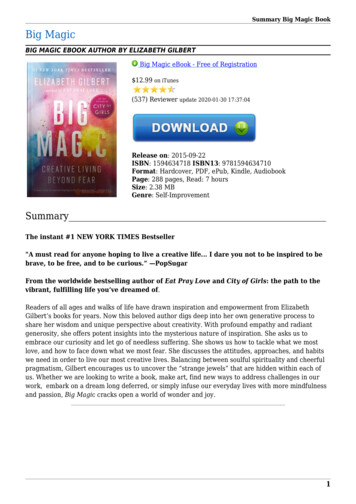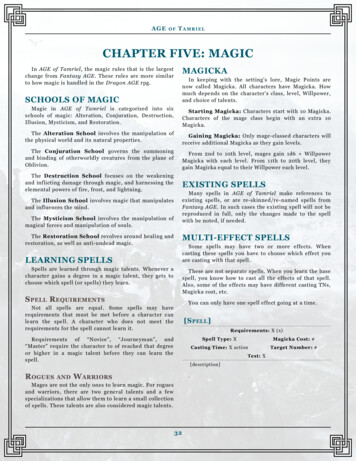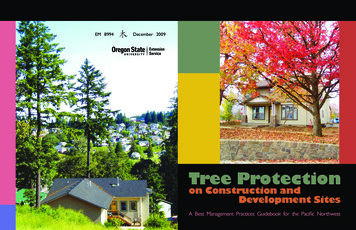
Transcription
Lesson Plan SummaryMagic Tree House #14: Day of the Dragon KingTHIS EXTENTION WILL ENABLE EACHCHILD TO:! Discover that children in other countrieslearn to communicate in different ways. Understand that Chinese children learn tocreate pictorial characters to representwords and ideas. Read historical fiction to learn facts aboutancient China. Discover that before the invention ofpaper, the Chinese wrote on bamboostrips. Compare English writing to Chinesecharacters. Compose a make-believe story. Translate a make-believe story into basicChinese characters. Review nouns and verbs as they writetheir stories. Present their make-believe stories to anaudience of their peers. Predict and listen with appropriateaudience behavior to the make-believestories of classmates. Discover that the process by which paperis made is a Chinese invention.COMMON CORE STANDARDS ADDRESSED:VISUAL ARTS: Understand historical and cultural content Express thoughts creatively in response totextREADING: Use literature as a basis for composingstories Use historical fiction as a prompt forcreative writing Predict events Compare and ContrastWRITING: Organize ideas prior to writing Plan writing by making informal outlines Create well-constructed sentences thatconnect to produce a coherent paragraphSPEAKING: Make an oral presentation that exhibitslogical structure and is appropriate to theaudience Ask appropriate questions, stay on topic,and link their comments to the remarks ofothers. Follow appropriate rules of discussion.Social Studies: Understand importance of a peopleʼs wayof life, language, and customs Discover the influence of other cultures onAmerican way of life over time Gain an appreciation for cultural awarenessand an understanding of cultural diversity Understand the importance of writtencommunication within appropriate culturalcontexts.14-1S112Created By: Paula Henson 2007 Magic Tree House Teacher of the Year Knoxville, TNCopyright2012, Mary Pope Osborne Classroom Adventures, all rights reserved.
Lesson PlanMagic Tree House #14: Day of the Dragon KingAfter reading Day of the Dragon King, your students will discover books were written on bamboostrips in Ancient China.It wasn’t until years later that the Chinese invented the method by which paper is made. They alsolearned that Chinese writing consists of characters that stand for objects or ideas and are writtenin vertical form. Provide children with the opportunity to make their own bamboo books andtranslate them into an English story that they can share with classmates!Materials For Each Student 8 Tongue Depressors4 ft. Embroidery Thread (any color)Sharpie Permanent Markers (dark colors are best)Activity sheet for students to draw their own representations of words and ideas (provided)List of Chinese Ideograph Characters (provided).14-1Created By: Paula Henson 2007 Magic Tree House Teacher of the Year Knoxville, TNCopyright2012, Mary Pope Osborne Classroom Adventures, all rights reserved.112
Prepare Ahead of TimeThe tongue depressors will need to be connected by embroidery thread ahead of time. Enlistparent volunteers to help with this task. Parents are often eager to help teachers prepareactivities, especially if they can do so at home. This is an effective way to allow working parentsthe opportunity to help with classroom activities. Students should be able to complete thisactivity independently. Follow the steps below in preparing the bamboo books:Step 1: Collect 8 tongue depressors in a vertical fashion (side by side)Step 2: Loop embroidery thread (double the thread) around each tongue depressor individuallyand knot tightly in between each one to create small “separation”. You will need to connect withtwo rows of thread.Step 3: Secure tightly between each tongue depressor and tie the two rows at the end. Theseparations between depressors hold the “book” together and enable children to “fold” theirbamboo books when they complete their stories.Directions1. Give each child a bamboo book, access to a variety of Sharpie permanent markers, ablank activity sheet with only the words for each character (provided), and a piece ofwriting paper.2. Before allowing students to see the copy of Chinese Ideograph Characters (provided),give children the blank activity sheet with only the words for each character. Have themdraw their own pictorial representation for each word.3. Next, give students a copy of the Chinese Ideograph Characters and allow them tocompare their drawings to the Chinese characters. Discuss any similarities anddifferences that exist.4. Then, allow children to “practice” writing a story using as many words from their activitysheet as possible on paper while viewing their own pictures.
Example: (Words for Chinese characters are highlighted.)The sun came up so my dog and I went for a walk by the stream. We saw a man trying to catcha fish in the stream. He was my father! I took his hand and we walked to a big tree in the fieldwhere his horse was waiting. It was time to go home because the moon was over the trees, butwe decided to return when the sun rises again.5. Next, allow children to practice drawing the Chinese characters that correspond to thewords in their stories on paper in vertical form (using the copy of the ideographcharacters).6. Children are now ready to transfer the English and Chinese versions of their stories tothe bamboo books. Ask students to first write their English story (in words only) on oneside of the bamboo book with Sharpies, then turn the bamboo book over and draw thecorresponding Chinese characters (using copies of the Chinese Characters provided) torepresent key words. Remind them that in Day of the Dragon King they learned thatChinese characters are written in a vertical form, unlike our horizontal form. Encouragethem to draw the Chinese characters vertically on the tongue depressors. Note that allwords used in the English version will not have a Chinese character such as it, to, andwhen. Discuss that the Chinese characters are all nouns and verbs in their stories. Thisactivity will serve to be an effective review of nouns and verbs.7. Finally, allow students to share their bamboo books with classmates. Students can readthe side of the bamboo book with the English version while classmates follow along bylooking at the opposite side of the book containing the Chinese characters. Allowchildren to predict what the stories will be about as they look at the Chinese charactersbefore hearing the story. Predicting allows for a greater degree of atch?v aQoz1pkKmdA&feature ''''''Draw pictures to represent your interpretation of the words:
m))))))walk
Copyright2012, Mary Pope Osborne Classroom Adventures, all rights reserved.
Lesson Plan , Magic Tree House #14: Day of the Dragon King It wasn't until years later that the Chinese invented the method by which paper is made. They also learned that Chinese writing consists of characters that stand for objects or ideas and are written in vertical form.

